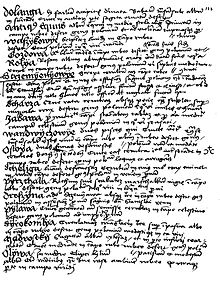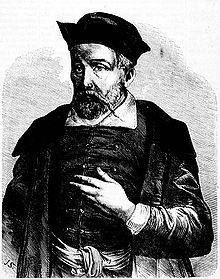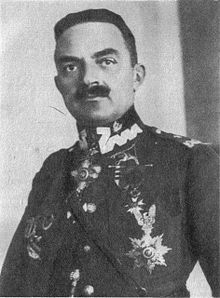Clan Ostoja (Moscics)
Clan Ostoja (Moscics) is one of the largest and oldest knightly and heraldic families in Europe, belonging to the Polish nobility.
The primary evidence here is the fact that the Ostoja coat of arms, in its linear structure and style, bears the traces of old proprietary and clan marks of the Great Steppe nomadic peoples (Scythian, Sarmatian, Finno-Ugric, etc.).
Prof. Tadeusz Sulimirski wrote in his book "Sarmatians": [...] There are many contradictory views on the origin of Polish coats of arms, none of which is convincing.
[...] However, no attention was paid to the striking resemblance of Polish coats of arms to Sarmatian tamgas and the almost identical form.
In the work Insignia seu clenodia Regis et Regni Poloniae, he wrote his observation as to the characterological features of the clan: "Ostoja [...] Genus Polonicum loquax et arrogans," which can be translated as: Ostoja [...] Polish family eloquent and audacious or as Bartosz Paprocki explained these words that the ancestors of the Ostoje clan were sometimes talkative and daring.
[10]There are three most famous legends about the creation of the coat of arms and the Ostoja (Moścics) family – Bartosz Paprocki (given in 1578), Szymon Okolski (given in 1642) and Wacław Potocki (given in 1696).
According to him, the origins of the Ostoja family should be associated with the journey of Japheth (son of Noah) to Croatia, who often prayed by the moonlight and therefore used his image as his personal sign.
A descendant of Japheth – Balthazar, who traveled to Bethlehem with Casper and Melchior, added a star to the family coat of arms, symbolizing the aforementioned journey to the birthplace of Christ.
Later Okolski wrote that the descendants of Balthazar who lived in Croatia left their homeland and, together with Czech and Lech, settled in distant lands.
He referred to the biblical story of Joshua's struggle against the Amorites when the sun and moon were held back so that the leader of the Israelites could defeat his enemies by day.
Potocki wrote that hence the two moons in the CoA, which were almost halfway down, a clear sign of the spilling blood, the sword separated the naked ones.
As an influential advisor and friend of the ruler of Hungary, he entered the circle of the most powerful aristocrats of medieval Europe.
[20]The oldest material testimony to the history of the family is the image of the Ostoja coat of arms, discovered during the conservation works of the church of St. Nicholas in Wysocice.
Certainly, the rite of the Ostoja coat of arms cannot come from a later period, because the sons of Mikołaj – Strachota and Ścibor sold their father's village in 1252 to the Cistercian monastery in Szczyrzyc and left Ściborzyce and moved to the northern regions of Poland.
An important historical memento of the family is also the sale document of Ściborzyce, which is the approval of the transaction by Bolesław the Chaste.
[22] It is possible that the ancestor of the above-mentioned heirs of Ściborzyce was the knight Cistebor (Cistibor), who in 1110 offered unum pallium to the Krakow cathedral.
Probably Strachota Mikołajewice of Ściborzyce, the prince's adjutant and most trusted knight, accompanied him during those visits to the castle in Drochiczyn.
[23] There is an image of the seal of Jakusz of Błociszewo, voivode of the Lviv town, showing the coat of arms of Ostoja with the inscription: S. IACUSSI.
The precious historical mementoes of the family include the baptismal font with the Ostoja coat of arms in the Church of the Assumption of the Blessed Virgin Mary and Saint Stanisław the Bishop in Bodzentyn, funded by Cardinal Fryderyk Jagiellończyk in 1492.
Among them there are titled persons holding the highest offices – princes (e.g. Marcin Szyszkowski), komes (e.g. Scibor from Sciborzyce), cardinals (e.g. Adam Kozłowiecki), bishops (e.g. Tomasz Ostaszewski), counts (e.g. Józef Andrzej Mikorski), generals (e.g. Tadeusz Błociszewski) and many others.
In the years 2012–2017, five meetings of members and supporters of the Ostoja Family Association were held in Dwór Ostoya, in Jasionka near Rzeszów.








































